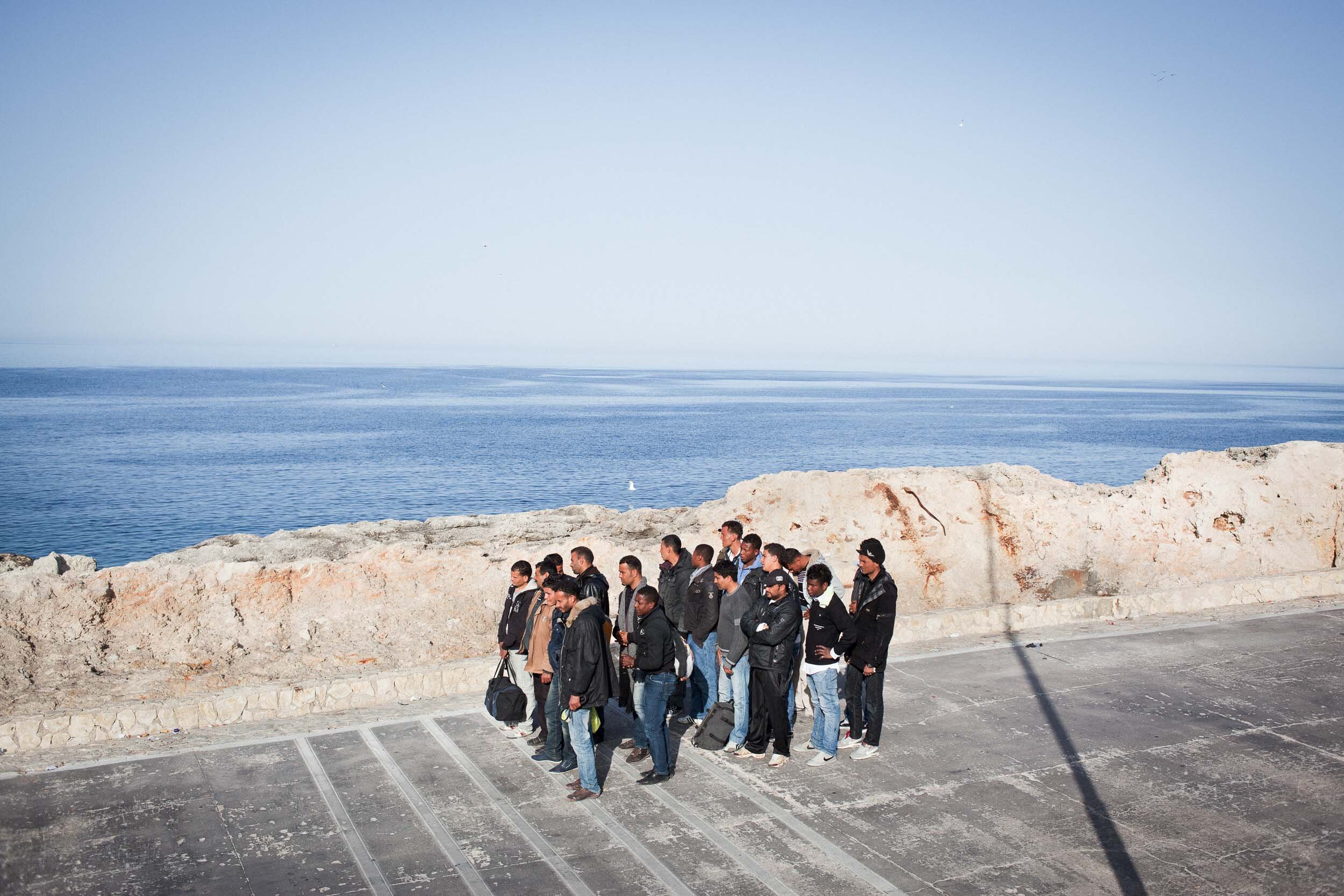Limbo
2011
A young man sits on a hill facing north, towards Italy, France and Germany. Towards Europe. Twelve hundred euros is the cost of hope to reach Lampedusa, a tiny island half-way between North Africa and Sicily. In 2011, approximately 53,000 North African and Sub-Saharan migrants arrived in the so-called “Door of Europe”, fleeing the unrest of the region. Lampedusa is both the ending and the beginning of the same story.
The journey starts in the Tunisian ports of Zarzis, Djerba and Sfax or in the Libyan ports of of Zuwara, Janzur and Tripoli, where migrants gather for days and sometimes weeks before their smuggler organizes the trip. They sail away from the North African shore with an overcrowded wooden boat and arrive between 10 and 30 hours later in what they call the land of freedom. But they will soon realize the gateway to Europe in the middle of the Mediterranean isn’t the Ellis Island to the Old Continent.
Day after day, week after week, migrants who wouldn’t fit in the already overcrowded immigration holding centre slowly filled the streets of the village, sleeping in abandoned boats and under trucks, while others would build their first European home on the so-called Hill of Shame, a carpet of improvised tents built with metal sticks, sheets, clothes and mattress in an open-air dump of plastic bags, dishes and bottles used as urinals. Migrants thought the hellish trip in the dangerous waters of the Strait of Sicily would bring them to heaven, to the new life they all waited for; but they soon realize Lampedusa, the pearl of the Mediterranean, would soon become a limbo of unbearable waiting.

























